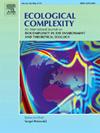Epidemic progression and vaccination in a heterogeneous population. Application to the Covid-19 epidemic
Abstract
The paper is devoted to a compartmental epidemiological model of infection progression in a heterogeneous population which consists of two groups with high disease transmission (HT) and low disease transmission (LT) potentials. Final size and duration of epidemic, the total and current maximal number of infected individuals are estimated depending on the structure of the population. It is shown that with the same basic reproduction number in the beginning of epidemic, its further progression depends on the ratio between the two groups. Therefore, fitting the data in the beginning of epidemic and the determination of are not sufficient to predict its long time behaviour. Available data on the Covid-19 epidemic allows the estimation of the proportion of the HT and LT groups. Estimated structure of the population is used for the investigation of the influence of vaccination on further epidemic development. The result of vaccination strongly depends on the proportion of vaccinated individuals between the two groups. Vaccination of the HT group acts to stop the epidemic and essentially decreases the total number of infected individuals at the end of epidemic and the current maximal number of infected individuals while vaccination of the LT group only acts to protect vaccinated individuals from further infection.

 求助内容:
求助内容: 应助结果提醒方式:
应助结果提醒方式:


